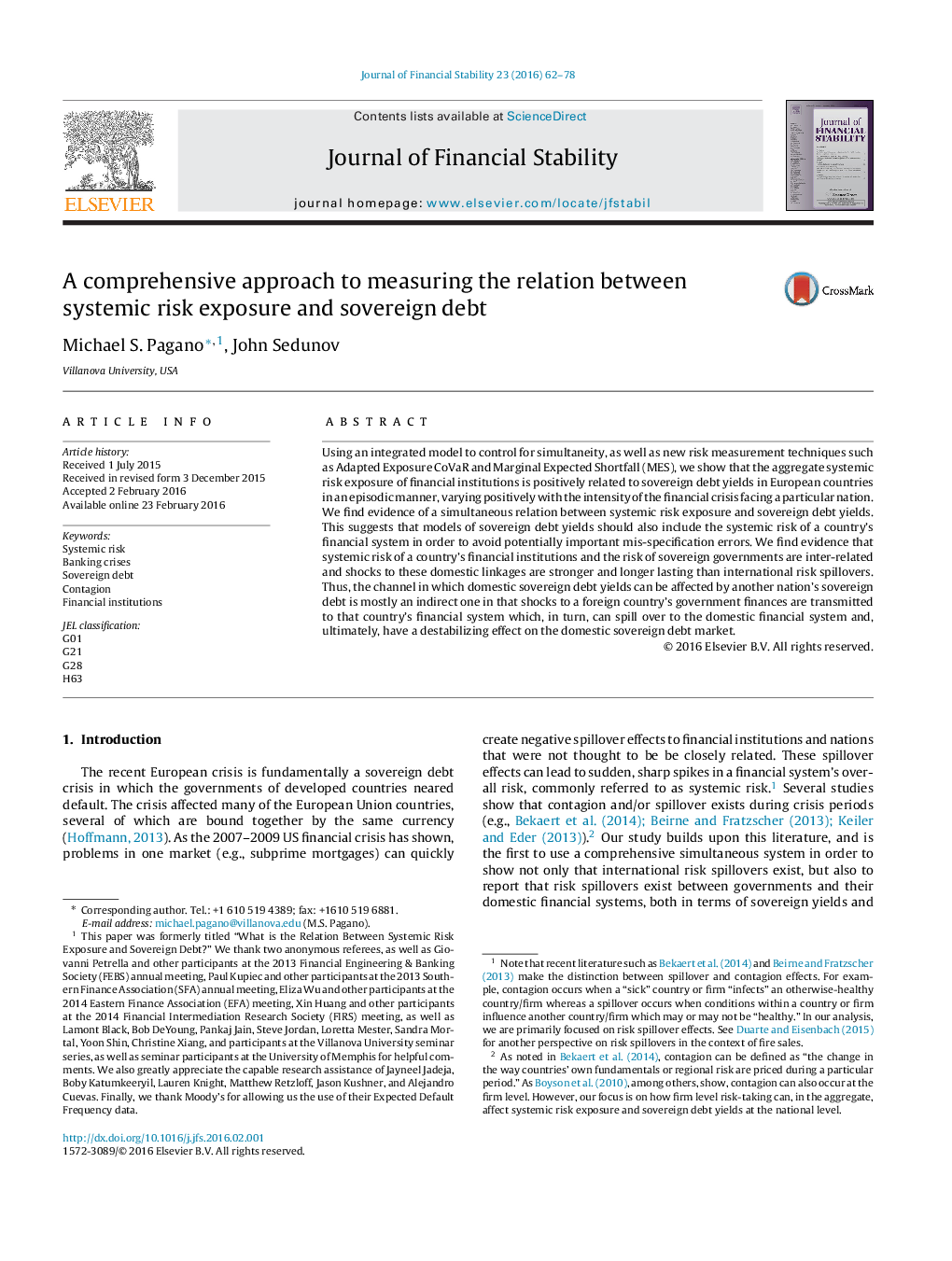| کد مقاله | کد نشریه | سال انتشار | مقاله انگلیسی | نسخه تمام متن |
|---|---|---|---|---|
| 998158 | 1481528 | 2016 | 17 صفحه PDF | دانلود رایگان |
• Systemic risk is positively related to sovereign debt yields in a crisis-driven, episodic manner.
• A simultaneous relation suggests that sovereign debt models should include systemic risk metrics.
• Shocks to domestic linkages are stronger and longer lasting than international risk spillovers.
• The channel is indirect between domestic sovereign debt yields and another nation's sovereign debt.
• The model is useful for capital adequacy, liquidity risk, “too-big-to-fail,” and monetary policy.
Using an integrated model to control for simultaneity, as well as new risk measurement techniques such as Adapted Exposure CoVaR and Marginal Expected Shortfall (MES), we show that the aggregate systemic risk exposure of financial institutions is positively related to sovereign debt yields in European countries in an episodic manner, varying positively with the intensity of the financial crisis facing a particular nation. We find evidence of a simultaneous relation between systemic risk exposure and sovereign debt yields. This suggests that models of sovereign debt yields should also include the systemic risk of a country's financial system in order to avoid potentially important mis-specification errors. We find evidence that systemic risk of a country's financial institutions and the risk of sovereign governments are inter-related and shocks to these domestic linkages are stronger and longer lasting than international risk spillovers. Thus, the channel in which domestic sovereign debt yields can be affected by another nation's sovereign debt is mostly an indirect one in that shocks to a foreign country's government finances are transmitted to that country's financial system which, in turn, can spill over to the domestic financial system and, ultimately, have a destabilizing effect on the domestic sovereign debt market.
Journal: Journal of Financial Stability - Volume 23, April 2016, Pages 62–78
